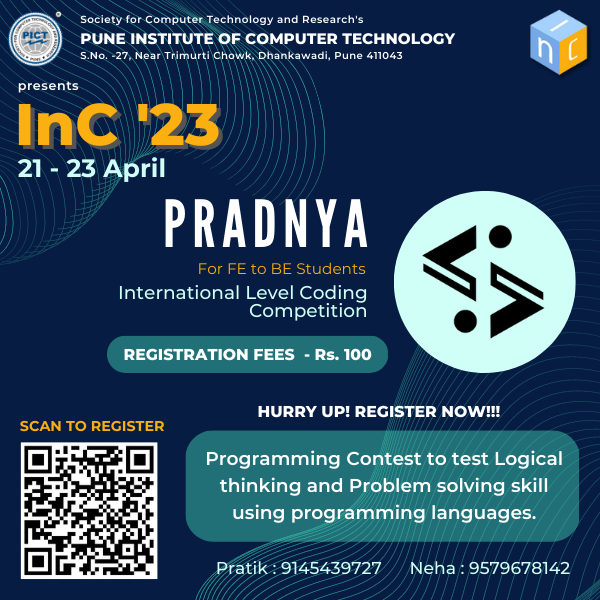
TextCraving for a coding challenge? Get ready because Pulzion '24 — Tech Across Ages is throwing a feast full of Codelicious treats for you to dig your fangs into.
I invite all of you to join and take part in Codelicious, the worldwide coding challenge featured in Pulzion: Tech Across Ages, the annual flagship event of PICT ACM Student Chapter.
You will be served 6-8 problems in a time frame of 2 hours to solve and savor them.
Special thanks to admiralpunk111, adsulswapnil27, prathameshkhanna, Lalit_Mohane, nah_man, tanay2245 for their valuable contribution.
Registrations: Only registrations via the website will be considered valid and will be eligible for the prizes. To register, please refer to our website: https://pulzion.co.in
Contest Details:
- Contest Link: https://www.codechef.com/CODELI2024
- Contest Date: 1st October 2024, 20:00 IST
Global Prizes:
- Rank 1 from leaderboard: 100 USD
- Rank 2 from leaderboard: 75 USD
Indian Prizes:
- Rank 1: Rs 6000
- Rank 2: Rs 4000
Pulzion App: https://bit.ly/4eES69b
NOTE: Prizes are subject to change under unavoidable circumstances. Management is not responsible for the change in the pool. Final decision lies in the hands of the organizers. In case any country has any restrictions on prize money transfer we shall not be responsible.











